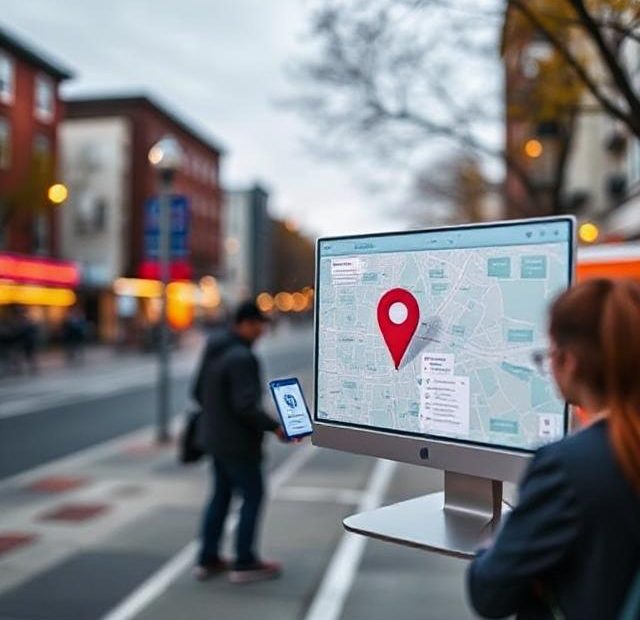In today’s competitive digital landscape, simply targeting your city or region may not be enough. Consumers are getting more specific, and search engines are adapting. That’s where hyperlocal SEO comes in. It’s a powerful strategy that can help small and medium-sized businesses dominate ultra-targeted, neighborhood-level search results.
Whether you’re a corner coffee shop, local plumber, or multi-location clinic, understanding and using hyperlocal SEO in 2025 can make all the difference in visibility, traffic, and conversions.
Let’s explore what hyperlocal SEO is, why it’s essential now, and how to implement it effectively.
What Is Hyperlocal SEO?
Hyperlocal SEO is the process of optimizing your online presence to appear in search results for extremely specific, location-focused queries — often down to the neighborhood, block, or even street level.
Rather than optimizing for a broad city-level keyword like “dentist in Houston,” hyperlocal SEO targets long-tail phrases such as:
-
“emergency dentist near Westheimer Road Houston”
-
“best Thai food in East Village NYC”
-
“laundry service near Sunset Blvd, LA”
In essence, you’re trying to show up where your customers actually are, not just in their city — but in their neighborhood or immediate surroundings.
Why Hyperlocal SEO Works in 2025
📱 Mobile Search Dominance
More than 70% of local searches now come from mobile devices. People on their phones want fast, nearby results, and Google delivers by showing location-aware results.
🎯 Voice Search & Conversational Queries
Thanks to voice assistants like Siri, Google Assistant, and Alexa, users ask more natural, hyperlocal questions like:
-
“Where’s the nearest hardware store?”
-
“What coffee shops are open near me?”
Hyperlocal SEO helps ensure your business is found when customers ask these hyper-targeted questions.
📍 Proximity-Based Search Results
In 2025, Google’s local algorithm heavily favors proximity and user intent. If you’re not optimized for ultra-local signals, you might not show up at all, even if you’re technically “in the area.”
💬 Trust and Personalization
People trust businesses that feel close, familiar, and relevant to their exact location. Hyperlocal content and listings build a stronger connection than generic service pages.
Key Elements of a Hyperlocal SEO Strategy
Now that you know why it works, let’s break down what you need to do to win hyperlocal search.
1. Create Hyperlocal Landing Pages
Build dedicated pages for specific neighborhoods, streets, or zones within your service area.
For example:
-
yoursite.com/los-angeles/koreatown
-
yoursite.com/chicago/lincoln-park
Each page should include:
-
A hyperlocal keyword in the title and H1
-
Directions or landmarks (e.g., “2 blocks from Broadway Station”)
-
Customer reviews from locals
-
A strong CTA targeting that specific location
2. Optimize Google Business Profile for Precision
Your Google Business Profile (GBP) is essential for hyperlocal success.
Tips:
-
Use your exact business location, not a broad city center address.
-
Add service areas, but focus on neighborhoods, zip codes, and districts.
-
Include photos tagged with specific locations and geotags.
Pro Tip: Add local attributes and post regular updates with neighborhood mentions (e.g., “New hours for Upper East Side customers”).
3. Use Hyperlocal Keywords and Phrases
Use tools like Google Keyword Planner, Ahrefs, or even Google Autocomplete to find long-tail hyperlocal terms.
Examples:
-
“[service] near [landmark/street]”
-
“top [service] in [neighborhood name]”
-
“closest [service] to [zip code]”
Include these in:
-
Title tags
-
Meta descriptions
-
Headers (H1, H2)
-
Image alt texts
4. Get Listed in Local Niche Directories
Beyond Yelp or YellowPages, find hyperlocal directories or websites:
-
Local blogs or city guides
-
Neighborhood Facebook groups
-
Community forums or local business chambers
These links and citations confirm your location relevance, boosting both organic rankings and map visibility.
5. Leverage Hyperlocal Content Marketing
Your blog and social content should target hyperlocal topics like:
-
“Best walking trails near Greenpoint Brooklyn”
-
“Why West Loop residents love our dental clinic”
-
“Top weekend events in Ballard, Seattle”
This builds topical authority and shows search engines (and users) that you’re deeply embedded in the community.
6. Collect Local Reviews (with Location Cues)
Encourage customers to leave neighborhood-specific feedback:
-
“This is the best barbershop on Melrose Avenue!”
-
“Came from Queen Anne to get their amazing spa treatment.”
Not only does this build social proof, but it also adds keyword-rich content to your business profile organically.
7. Utilize Schema Markup for Local Business
Implement LocalBusiness schema to give search engines structured data about your exact business location, opening hours, and contact info.
For multiple locations, use nested schema and ensure each location has its own URL and structured markup.
8. Monitor Performance and Adjust
Track your hyperlocal performance using:
-
Google Search Console: for impressions and clicks by queries
-
Google Analytics 4: for neighborhood-based user insights (via user location data)
-
Local Falcon or BrightLocal: for geo-grid rank tracking
Tweak your content, titles, and service areas based on the neighborhoods showing growth — or gaps.
Common Hyperlocal SEO Mistakes to Avoid
-
❌ Using only city-level keywords
-
❌ Creating duplicate content across neighborhood pages
-
❌ Neglecting mobile experience or page load speed
-
❌ Ignoring user-generated content like reviews
-
❌ Listing service areas too broadly in GBP
Avoiding these pitfalls ensures you don’t lose out on high-intent local traffic.
Final Thoughts: Go Smaller to Win Bigger
In 2025, hyperlocal SEO is not just a trend — it’s a necessity. Consumers expect search results that reflect where they are right now, not just their city.
If you want your local business to dominate the map pack, show up in “near me” searches, and convert on-the-go searchers, it’s time to go hyperlocal.
Start by optimizing one neighborhood page. Update your Google Business Profile with tighter targeting. Then build on that success — one block, one search, one customer at a time.
Also, you can learn more about Link Building here.
